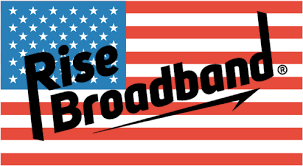Introduction
Living in an urban area provides access to multiple internet options, but finding the perfect fit can still be daunting. From ultra-fast fiber to reliable cable, urban residents have diverse internet technologies at their disposal. This comprehensive guide will help you compare urban internet providers and choose the plan that aligns with your needs.
Urban Internet Technologies Explained
1. Fiber-Optic Internet
Fiber-optic technology offers unmatched speeds and reliability, making it ideal for high-bandwidth activities.
- Speeds: Up to 1 Gbps or higher.
- Pros: Excellent for gaming, 4K streaming, and remote work.
- Cons: Limited availability in some neighborhoods.
2. Cable Internet
Cable internet combines affordability and widespread availability, making it a popular choice in urban areas.
- Speeds: Up to 1 Gbps, depending on the provider.
- Pros: Reliable for households with multiple users.
- Cons: Speeds may drop during peak hours.
3. Fixed Wireless Internet
Fixed wireless is a quick-install solution for urban dwellers, especially in high-rise buildings.
- Speeds: 10–100 Mbps.
- Pros: No cables required; easy installation.
- Cons: Susceptible to weather interference.
4. Satellite Internet
Satellite internet is less common but can serve as a backup option for areas with limited connectivity.
- Speeds: Up to 100 Mbps.
- Pros: Available almost everywhere.
- Cons: Higher latency and data caps.
Top Urban Internet Providers
| Provider | Technology | Max Speed | Price Range | Coverage |
|---|---|---|---|---|
| Google Fiber | Fiber-Optic | 2 Gbps | Starting at $70/month | Limited Cities |
| AT&T | Fiber, DSL | 1 Gbps (Fiber) | Starting at $55/month | Wide Coverage |
| Spectrum | Cable | 1 Gbps | Starting at $49.99/month | Extensive |
| Verizon Fios | Fiber-Optic | 1 Gbps | Starting at $39.99/month | Select Cities |
How to Choose the Best Internet Option
Consider these factors to identify the right internet plan for your urban lifestyle:
- Determine Your Usage Needs:
- Light browsing: Speeds up to 25 Mbps.
- Streaming and gaming: 100–500 Mbps.
- Multi-user households: 1 Gbps or more.
- Compare Providers: Use tools like the KonectEaze Internet Finder to evaluate available options.
- Check for Promotions: Look for discounts, free installation, or bundled packages.
- Read Customer Reviews: Research user feedback to assess provider reliability.
Benefits of Urban Internet
- Faster Speeds: Access to fiber and advanced cable technologies.
- Affordable Plans: Competitive pricing due to multiple providers.
- Bundling Options: Combine internet with TV or phone for cost savings.
Real Customer Insights
"Google Fiber: Lightning-fast and worth every penny! Perfect for work and play." – Sarah, Austin, TX
"Spectrum: Great value for the price, but expect a speed dip during peak hours." – Mike, New York, NY
Ready to upgrade your internet? Compare the best urban internet providers now!




